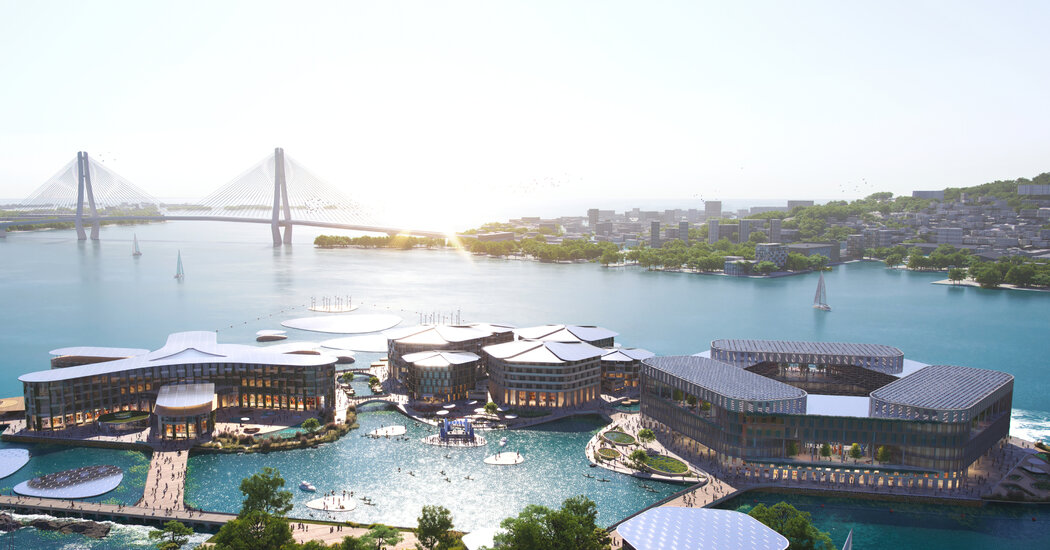“We were more making sure that the concepts that we developed for the city infrastructure could house a great degree of variation of different kinds of architecture,” said Daniel Sundlin, a partner at BIG. (The firm also developed a community of 72 floating apartments in Copenhagen near a deserted island that had served as a shipyard, as part of a project called Urban Rigger.)
The shape of the Busan platforms, basically rounded hexagons, keeps them stable; they won’t rock with every wave, as a houseboat would. BIG also worked with the Massachusetts Institute of Technology and marine engineering firms to make sure the platforms can withstand the waves and winds associated with hurricanes.
“We have been conscious about the scale of the buildings, and also the materials we use to keep the weight as light as possible,” Mr. Sundlin said. “Treated wood is a great material in that it is very lightweight.”
“Steel is lightweight,” he added, as compared with concrete or masonry.
These structures are also unique in their ability to increase biodiversity and the ecological health of the harbors in which they are anchored, by providing places for oysters and mussels, for example, to grow. “This kind of floating structure attracts life in the ocean and essentially helps to restore ecology,” Mr. Sundlin said.
Floating cities are the Wild West in terms of international regulations and standards. So projects like Busan are setting those standards, with the help of the United Nations. Naomi Hoogervorst, the program management officer of the Planning, Finance and Economy Section of UN-Habitat, said it is the organization’s role to make sure sustainable development goals are implemented at all levels.
Ms. Hoogervorst said Busan was chosen because it strongly embraces technological innovations, especially in marine engineering, and because Korea is promoting smart marine cities in general. Ms. Madamombe added, “The mayor is dedicated to making Busan the No. 1 smart marine city,” so they are able to move more quickly than people working on similar projects in other parts of the world.
“I think people see it as this far-fetched, futuristic thing,” Mr. Sundlin said. But, he added, floating markets, houseboats and houses on stilts have been around “since the beginning of civilization.” He noted that these forms of architecture are still “a very common way of living next to or on top of water.”


